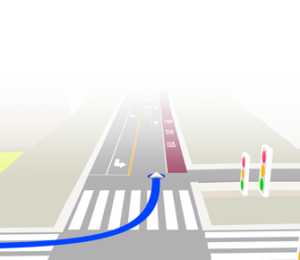Despite major advances in computer vision, LiDAR, HD maps, and 5G, Level 3 autonomy remains limited in scope. Most autonomous vehicles today are restricted to urban test zones, operate as robotaxis, or are available only in high-end luxury models—often without the safety certifications required to meet fast-evolving global regulations.
Precise GNSS addresses three of the biggest barriers to widespread autonomy: reliability, cost, and safety. Already adopted by the vast majority of global automotive OEMs, precise GNSS has become a foundational technology—and Swift Navigation makes it easier than ever to deploy at scale.
On April 8, 2025, at the American Center for Mobility (ACM), Swift Navigation partnered with the Society of Automotive Analysts (SAA) to host a panel discussion on the future of precise GNSS positioning and its role in enabling safe, scalable autonomy. The conversation was moderated by Gary Vasilash, Automotive Observer and Co-Host of Autoline After Hours, and featured expert insights from:
- James Tidd, VP of Systems Engineering, Swift Navigation
- Daniela Steinbacher, Program Director, Bosch
- Curtis Hay, Technical Fellow, General Motors
- Mark Barrott, Partner, Automotive / Mobility Practice Leader, Plante Moran
Watch key takeaways from the panel
The panel set the stage for a compelling live demonstration held immediately afterward. In it, automotive journalists, analysts, and industry professionals played the role of the autonomous system—navigating a complex test circuit using only Swift’s centimeter-accurate GNSS solution, without any visual aid. The results speak for themselves and underscore the real-world readiness of precise GNSS for autonomy.
Watch the demo highlights
Here are a few key takeaways from the panel discussion:
From 10 Meters to 2 Centimeters
Standard GPS can be off by as much as 10 meters—a margin far too wide for autonomous operation. Precise GNSS closes that gap, delivering accuracy within 2 centimeters. This leap isn’t theoretical—it’s being achieved today with the right infrastructure and technology.
How GNSS Works
GNSS includes four global satellite constellations, not just GPS. It plays a critical role in everyday life—from smartphones and cars to time-stamping financial transactions. But GNSS signals are inherently noisy, affected by satellite orbit drift, clock errors, and atmospheric interference.
Swift Navigation overcomes these limitations with a global network of ground stations. These monitor GNSS signals, model the errors in real time, and send corrections to GNSS receivers—enabling precise, reliable positioning at continental scale.
It’s Already in the Car
What makes this transformation even more compelling is that the necessary hardware is already built into most modern vehicles. With just a software upgrade, automakers can boost location accuracy from 10 meters to 2 centimeters—without additional hardware or integration complexity.
A Unique Sensor in the Autonomy Stack
GNSS is the only sensor in a vehicle that provides absolute global position. It speaks a universal language—latitude and longitude—that aligns across digital maps, infrastructure, and cloud systems. It’s also one of the most cost-effective and globally available inputs in the autonomy stack.
Built to Complement Other Sensors
Precise GNSS isn’t a replacement for perception systems—it’s a complement. On open highways with sparse features, where vision systems may struggle, GNSS excels. In tunnels or dense urban environments, perception takes over. These systems work best together, each offsetting the other’s limitations.
Momentum is Building
The industry is already moving:
- ~70% of automakers have precision GNSS planned for vehicles launching between model years 2027 and 2029
- ~20% are actively evaluating the technology through proof-of-concept programs
- 10% are in early-stage exploration
Swift Navigation is powering this shift—its precise positioning technology is already deployed in vehicles on the road today and awarded across programs totaling more than 10 million ADAS-enabled and autonomous vehicles globally. As automakers scale their autonomy roadmaps, precise GNSS is rapidly becoming a core enabler of safe, connected mobility.
A Business Case Beyond Safety
Precise GNSS doesn’t just make autonomy safer—it makes it scalable. It powers connected and shared mobility, enables route optimization, and unlocks efficiencies in fleet operations. This translates into significant revenue opportunities across ride-hailing, logistics, and smart infrastructure.
Learn more about Swift Navigation’s precise positioning solution for automotive autonomy.





